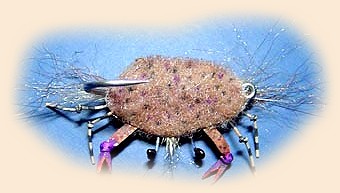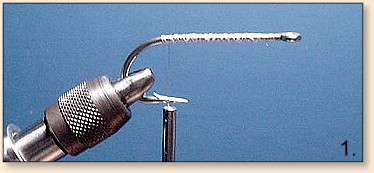
1. Start behind the eye and wrap a base of thread
back to the start of the bend.
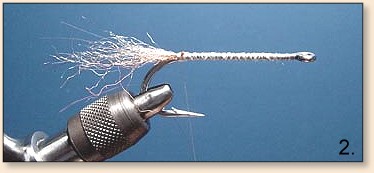
2. Tie in a small clump of tan PolyBear or Antron
or Sea Fibers extending out past the bend ½ the shank length.
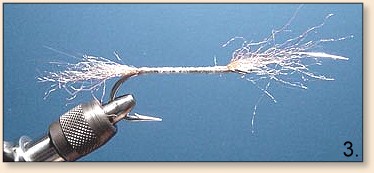
3. Tie in a small clump of tan PolyBear or Antron or Sea Fibers extending
out past the eye ½ the shank length.
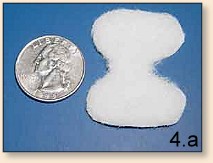
4A. Double over a piece of adhesive backed loop Velcro. Trim a piece that
when opened up appears to be a flattened 8.
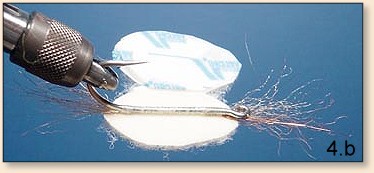
4B. Peel back ½ the adhesive backing and stick
the Velcro to the hook shank.
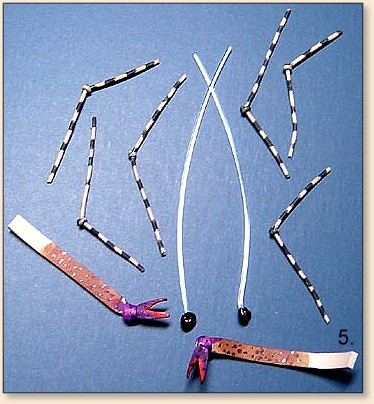
5. Now it is time to prepare the guts and add them to the body.
Legs - Cut 4 pieces of rubber legs to a length of 1 inch.
Tie a single overhand knot in each piece just slightly
off center.
Claws - Cut 2 pieces of rubberband to a length
of 1 inch. Tie an overhand knot in each piece so that
the knot is about 1/3 of an inch from one end. Trim
the shorter leg to look like a pincher. You can use
markers to color the claws to match the local species.
Eyes - Cut a couple 1-inch pieces of 40lb or 50lb
monofilament. Use a lighter to burn one end of each piece
to form an eye. Use a pair of pliers to form a 90-degree
elbow ¼ inch from the other end. This will help hold
the eyes in the body better.
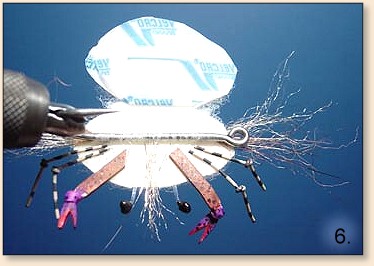
6. Ever order stuffed crab at a restaurant? Well, now
it's time to stuff your own. Place the legs into the
adhesive. Place 2 legs on each side of the crab, next
to the hook shank. Position the legs so that the legs
will angle down. Now you can add the claws and then
the eyes. I like to add a little PolyBear, Antron or
Sea Fibers between the eyes to act as the mouthparts.
If you are trying to imitate a Blue Crab you can add
one extra set of legs on body on the opposite side of
the hook shank. These legs are the swimmers so wide
rubberband can be used effectively.
You can also insert a rattle at this time if you wish.
This had proven very effective when targeting Redfish
in stained water.
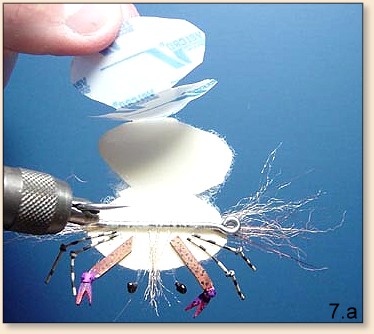
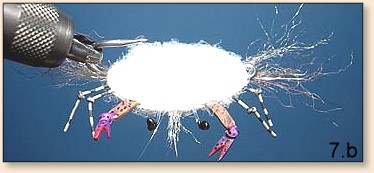
7. Peel the rest of the adhesive backing off and fold
over the top of the Velcro body and press firmly.
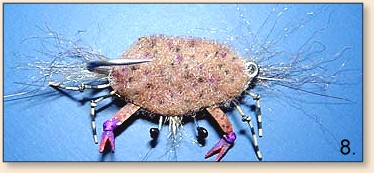
8. Use markers to color the crab so that it closely
resembles the crabs in the area you will be fishing
the fly. You will be surprised just how finicky
the fish can be, refusing crab flies that are not
colored exactly like the local prey species.

